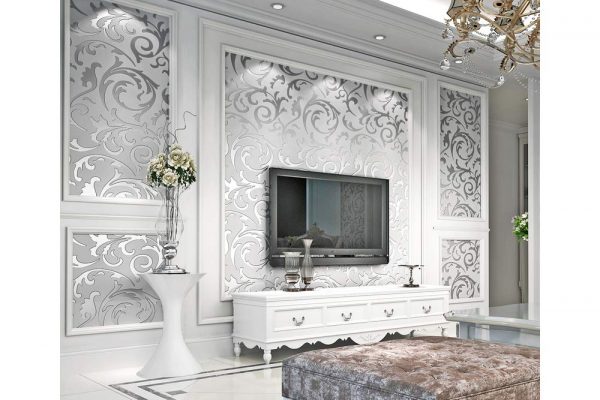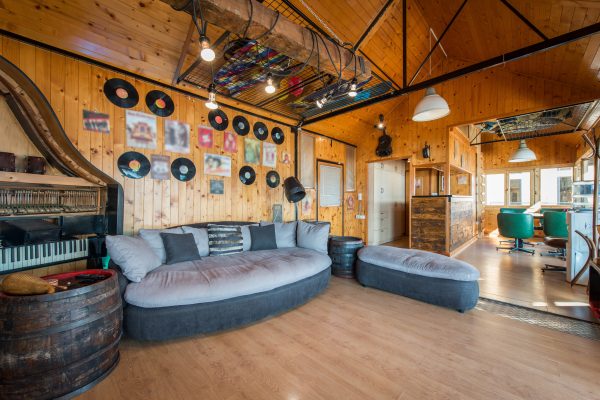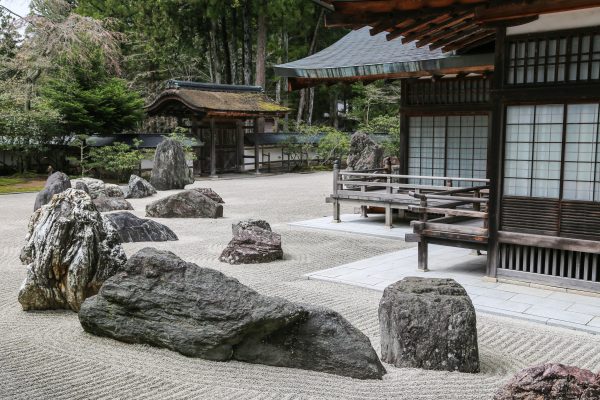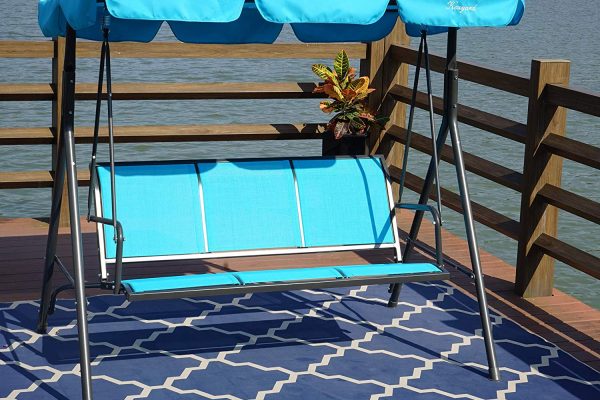Home>Garden Essentials>Explain Why Parks And Other Green Space In A City Help To Reduce The Urban Heat Island Effect


Garden Essentials
Explain Why Parks And Other Green Space In A City Help To Reduce The Urban Heat Island Effect
Modified: March 7, 2024
Discover how parks and green spaces, like gardens, contribute to reducing the urban heat island effect in cities. Explore the benefits of green areas in alleviating heat and creating a healthier urban environment.
(Many of the links in this article redirect to a specific reviewed product. Your purchase of these products through affiliate links helps to generate commission for Storables.com, at no extra cost. Learn more)
Introduction
Welcome to the world of urban gardening! In this article, we will explore the fascinating topic of how parks and other green spaces in a city can help reduce the urban heat island effect. As cities continue to grow and evolve, the urban heat island effect has become a pressing concern. This phenomenon refers to the significant increase in temperature in urban areas compared to the surrounding rural areas. The rise in temperature is primarily caused by the extensive use of concrete, asphalt, and other heat-absorbing materials in urban environments.
The urban heat island effect can have numerous detrimental effects, including increased energy consumption, compromised air quality, and negative impacts on human health and well-being. However, parks and green spaces offer a solution to mitigate and counteract these effects. By understanding the causes of the urban heat island effect and exploring the role of vegetation in reducing it, we can appreciate the importance of incorporating green spaces into our city landscapes.
So, join me as we delve into the world of urban gardening and explore how parks and green spaces can help mitigate the urban heat island effect. Together, let’s uncover the myriad benefits and discover the potential for creating healthier and more sustainable cities.
Key Takeaways:
- Green spaces like parks and gardens help cool cities by providing shade, absorbing pollutants, and reducing heat-trapping surfaces, making urban areas more comfortable and healthier for everyone.
- Trees and vegetation in parks not only make cities look beautiful but also help lower temperatures, improve air quality, and create spaces for people to relax and enjoy nature, making cities more enjoyable and sustainable.
Definition of the Urban Heat Island Effect
The urban heat island effect refers to the phenomenon where urban areas experience significantly higher temperatures compared to nearby rural areas. This temperature disparity is caused by the unique characteristics of urban environments, including the abundance of heat-absorbing materials and the reduced presence of vegetation.
Urban areas tend to have vast expanses of concrete, asphalt, and other dark-colored surfaces that absorb and store heat from the sun, resulting in higher surface temperatures. These heat-absorbing materials, commonly found in roads, buildings, and parking lots, contribute to the overall increase in temperature in urban areas.
The lack of vegetation further exacerbates the urban heat island effect. Compared to rural areas, cities often have fewer trees and green spaces, which play a crucial role in regulating temperatures. Vegetation helps to cool the surrounding environment through the process of evapotranspiration, where plants release moisture into the air through their leaves. This process has a natural cooling effect, similar to how our bodies cool down through sweating.
Furthermore, the compact layout of urban areas and the presence of tall buildings can result in the creation of “urban canyons,” where heat is trapped and circulated within the city. This trapped heat leads to higher temperatures, creating a localized heat island effect.
It is important to note that the urban heat island effect is not solely confined to cities. In densely populated suburban areas, this phenomenon can also occur, albeit to a lesser extent. The intensity of the urban heat island effect varies based on factors such as the size of the city, the amount of vegetation, and regional climate patterns.
Understanding the definition of the urban heat island effect is crucial in addressing this issue and implementing effective strategies to mitigate its impacts. By incorporating green spaces and adopting sustainable urban planning practices, we can work towards creating more comfortable and resilient cities for future generations.
Causes of the Urban Heat Island Effect
The urban heat island effect is caused by a combination of factors related to the built environment and the lack of vegetation in urban areas. These factors contribute to the significant increase in temperature observed in cities compared to surrounding rural areas. Let’s explore the primary causes of the urban heat island effect:
- Heat-absorbing materials: Urban areas are characterized by the extensive use of heat-absorbing materials such as concrete, asphalt, and dark-colored surfaces. These materials have high thermal conductivity, meaning they absorb and store heat from the sun’s radiation. As a result, urban surfaces become significantly hotter compared to natural surfaces.
- Lack of vegetation: Urban environments often have a scarcity of trees, grass, and other types of vegetation. Trees play a crucial role in cooling the environment through the process of evapotranspiration, where they release moisture into the air through their leaves. This process helps to lower temperatures and create a more comfortable microclimate. In cities with limited vegetation, the absence of this cooling effect contributes to higher temperatures.
- Urban layout: The physical layout of urban areas can contribute to the intensification of the urban heat island effect. Tall buildings can create “urban canyons,” where heat becomes trapped and circulates within the city. This trapped heat exacerbates the temperature rise and reduces airflow, preventing the dissipation of heat.
- Limited natural ventilation: Urban areas, with their dense concentration of buildings and structures, often experience limited natural ventilation. The lack of airflow prevents the dispersion of heat, keeping it confined within the city and contributing to higher temperatures.
- Human activities: Human activities in urban areas, such as vehicular emissions, industrial processes, and energy consumption, release significant amounts of heat and pollutants into the atmosphere. These heat sources can further elevate temperatures in cities, exacerbating the urban heat island effect.
The causes of the urban heat island effect are complex and multifaceted, but they all point to the need for strategic urban planning and the incorporation of green spaces. By addressing these causes and implementing measures to cool urban environments, we can create more sustainable and livable cities where the impact of the urban heat island effect is minimized.
Explanation of Parks and Green Spaces
Parks and green spaces play a pivotal role in urban environments, providing a range of benefits to both the natural ecosystem and the well-being of city residents. These areas are characterized by the presence of vegetation, including trees, grass, gardens, and other plant life. Let’s delve into the explanation of parks and green spaces and their significance in urban landscapes:
Parks: Parks are designated areas within cities that are specifically designed and maintained for recreational and leisure purposes. They often feature expansive green spaces, walking paths, playgrounds, sports facilities, and picnic areas. Parks provide a sanctuary of nature in the midst of urban chaos, allowing people to relax, exercise, and connect with the environment.
Green spaces: Green spaces encompass a broader range of areas that incorporate vegetation, such as gardens, urban forests, nature reserves, and community greenspaces. These spaces can vary in size and purpose, ranging from small pocket parks to larger nature reserves. Green spaces not only add aesthetic beauty to urban areas but also provide numerous environmental and social benefits.
The presence of parks and green spaces in a city offers several advantages:
- Improved air quality: Vegetation in parks and green spaces helps to purify the air by absorbing pollutants and releasing oxygen through the process of photosynthesis. Trees, in particular, act as natural air filters, mitigating the negative effects of air pollution and improving overall air quality in urban areas.
- Enhanced biodiversity: Parks and green spaces provide a refuge for wildlife in urban environments. They create habitats for birds, insects, and other species, contributing to the preservation of biodiversity. By incorporating native plants and creating diverse ecosystems, parks can support a wide range of flora and fauna, promoting ecological health and balance.
- Temperature regulation: The presence of vegetation in parks and green spaces helps to counteract the urban heat island effect by providing natural cooling. Trees provide shade and can reduce ambient temperatures, creating a more comfortable microclimate. Green spaces with a high density of vegetation can influence the surrounding areas, mitigating the heat island effect and reducing energy consumption for cooling.
- Water management: Parks and green spaces play a role in water management by absorbing and filtering rainwater. Vegetation helps to prevent soil erosion and surface runoff, reducing the risk of floods and maintaining the health of local water bodies. Well-designed green spaces can incorporate features such as rain gardens and bioswales to enhance water absorption and filtration.
- Recreation and well-being: Parks and green spaces offer opportunities for outdoor recreation and relaxation. They provide spaces for leisure activities, exercise, and social interactions, promoting physical and mental well-being. These green spaces serve as havens for respite from the hustle and bustle of urban life, connecting people with nature and fostering a sense of community.
Parks and green spaces are not merely ornamental additions to cities, but integral components of sustainable urban planning. They provide a multitude of benefits that contribute to a healthier environment, improved quality of life, and a more resilient and livable urban ecosystem.
Role of Vegetation in Reducing Urban Heat Island Effect
Vegetation plays a critical role in mitigating the urban heat island effect by providing natural cooling and shading in urban areas. The presence of vegetation, such as trees, grass, and plants, helps to counteract the heat generated by urbanization and create a more comfortable and sustainable environment. Here are the key roles that vegetation plays in reducing the urban heat island effect:
- Shade and cooling: Trees, with their broad canopies, provide shade to urban areas, reducing direct exposure to the sun’s rays. This shading effect helps to lower temperatures on surfaces such as buildings, roads, and sidewalks. Additionally, the process of transpiration, where trees release water vapor through their leaves, has a cooling effect on the surrounding air. The combined benefits of shade and transpiration help to alleviate the excess heat in urban environments, reducing the urban heat island effect.
- Evapotranspiration: Vegetation, particularly trees, contributes to cooling through evapotranspiration. During the process of transpiration, trees release water vapor into the air, similar to how our bodies cool down through sweating. This release of moisture helps to lower ambient temperatures and create a more pleasant microclimate in urban areas. Evapotranspiration also leads to increased humidity levels, which can counteract the dryness and discomfort often associated with urban environments.
- Reduced energy consumption: The cooling effect of vegetation can significantly reduce the need for artificial cooling in buildings. By strategically positioning trees and greenery near buildings, the shade they provide can minimize the heat gain inside, reducing the reliance on air conditioning systems. This decreased energy consumption not only saves costs but also reduces greenhouse gas emissions, resulting in a more sustainable and environmentally-friendly urban ecosystem.
- Absorption of carbon dioxide: Vegetation plays a crucial role in mitigating climate change by absorbing carbon dioxide, a major greenhouse gas contributing to global warming. As trees and plants take in carbon dioxide during photosynthesis, they help to reduce its concentration in the atmosphere. By increasing the presence of vegetation in urban areas, we can simultaneously combat climate change and reduce the urban heat island effect.
- Enhanced air quality: Vegetation in urban areas acts as natural air filters, capturing and removing pollutants from the atmosphere. Trees and plants absorb harmful gases and particles, improving air quality and reducing the health risks associated with poor air pollution. By reducing the presence of pollutants and improving air quality, vegetation further contributes to a healthier and more livable urban environment.
By recognizing and maximizing the role of vegetation in urban planning, we can create greener and more sustainable cities. Incorporating and preserving green spaces, planting more trees, and adopting eco-friendly landscaping practices are essential steps toward reducing the urban heat island effect and creating healthier, more resilient urban environments.
Shading and Cooling Effects of Trees in Parks and Green Spaces
Trees in parks and green spaces provide invaluable shading and cooling effects that help alleviate the urban heat island effect. Their canopy coverage and ability to transpire water contribute to creating a cooler and more comfortable microclimate in urban areas. Let’s explore the benefits of the shading and cooling effects of trees:
- Temperature reduction: Trees offer natural shading, intercepting and filtering direct sunlight. By creating shade, trees reduce the amount of solar radiation that reaches the ground, preventing surfaces from heating up. In turn, this lowers ambient air temperatures, making the surrounding environment more pleasant and reducing the heat island effect in urban areas.
- Lower surface temperatures: The shade provided by trees helps to reduce surface temperatures of buildings, roads, and pavements, which tend to absorb and radiate heat. By lowering surface temperatures, trees mitigate the urban heat island effect and alleviate the discomfort associated with hot surfaces. This cooling effect not only enhances the comfort of pedestrians and occupants of nearby buildings but also reduces the energy required for air conditioning, leading to cost and energy savings.
- Evaporative cooling: Through the process of transpiration, trees release water vapor into the air. This evapotranspiration process has a cooling effect on the surrounding environment. As moisture evaporates from the leaves, it removes heat from the air, reducing temperatures in the immediate vicinity. The greater the leaf surface area, the more significant the cooling effect. Hence, certain tree species with dense foliage are particularly effective at cooling the surrounding air.
- Social benefits: The shading and cooling effects of trees in parks and green spaces create more comfortable and inviting outdoor spaces for recreational activities and social interactions. People are more likely to spend time in these areas when the temperature is moderated, enhancing community engagement and promoting a sense of well-being and connectivity in the neighborhood.
- Reduced heat-related health risks: High temperatures in urban areas can pose health risks, especially for vulnerable populations. The cooling provided by trees in parks and green spaces helps combat heat-related illnesses, such as heat stroke or heat exhaustion. The shaded areas also function as cooling refuges, providing relief from extreme temperatures and reducing the likelihood of heat-related health issues.
Strategically planting trees in parks and green spaces is crucial for maximizing their shading and cooling effects. Proper tree selection and placement, considering factors such as species characteristics, height, crown density, and proximity to buildings and infrastructure, can optimize the benefits they provide. Additionally, maintenance practices, such as pruning, watering, and mulching, are necessary to ensure trees thrive and continue to deliver their shading and cooling advantages.
By harnessing the shading and cooling effects of trees in parks and green spaces, urban areas can create cooler, more sustainable, and livable environments that mitigate the urban heat island effect and enhance the quality of life for residents.
Planting more trees and creating green spaces in a city can help reduce the urban heat island effect by providing shade, releasing moisture through transpiration, and reducing the amount of heat-absorbing surfaces like concrete and asphalt.
Evapotranspiration and its Cooling Effect
Evapotranspiration is a vital process performed by plants, particularly trees, which plays a significant role in cooling urban environments. This natural mechanism involves the combined processes of evaporation and transpiration, leading to the release of water vapor into the surrounding air. Let’s explore the concept of evapotranspiration and its cooling effect:
Evaporation: Evaporation occurs when water, either from the soil or other surfaces, turns into water vapor and enters the atmosphere. In the case of evapotranspiration, the water source is primarily from the soil, which is taken up by plant roots.
Transpiration: Transpiration, on the other hand, is the process by which plants release water vapor through their leaves. This occurs as moisture moves upwards from the roots to the leaves, where it evaporates through tiny pores called stomata. Transpiration is a vital physiological process for plants as it helps to transport nutrients and minerals, maintain cell structure, and regulate temperature.
The combined effect of evaporation and transpiration contributes to a cooling effect in the following ways:
- Heat absorption and dissipation: As plants transpire, the water vapor released from their leaves absorbs heat energy from the surrounding environment. This process effectively cools the plant’s tissues and reduces the ambient temperature. The absorbed heat is subsequently dissipated when the water vapor evaporates, leading to a cooling effect in the surrounding area.
- Temperature moderation: Evapotranspiration helps regulate temperature by maintaining appropriate humidity levels in the vicinity. As water vapor is released, the air around the plants becomes more humid. Higher humidity can prevent excessive drying and create a more comfortable microclimate, mitigating the effects of hot and dry conditions typically associated with urban environments.
- Local air circulation: The release of moist air through evapotranspiration can influence local air currents. The rising water vapor creates convective currents that generate air movement and promote ventilation. This enhanced airflow can help disperse and dilute heat, contributing to a more pleasant and cooler environment.
- Pollen and dust reduction: Another benefit of evapotranspiration is its ability to trap and settle pollen and dust particles present in the air. As water vapor evaporates from plant surfaces, it creates a microscopic washout effect. This washes down and reduces the concentration of airborne allergens, improving air quality and reducing the risk of respiratory allergies and irritations.
- Economic benefits: Evapotranspiration offers potential economic gains as well. The cooling effect can reduce energy demand for air conditioning, leading to cost savings for individuals, institutions, and cities. Additionally, the presence of vegetation and the cooling provided by evapotranspiration can increase property values, attract businesses, and improve the overall attractiveness and livability of urban areas.
Understanding the importance of evapotranspiration and incorporating vegetation that promotes this process is crucial for creating more sustainable and cool urban environments. By maximizing evapotranspiration through the strategic placement of trees and other plants, cities can effectively combat the urban heat island effect, enhance thermal comfort, and improve the overall well-being of their residents.
Reduction of Heat-trapping Surfaces by Green Spaces
Green spaces, such as parks and gardens, play a crucial role in reducing the amount of heat-trapping surfaces in urban environments. The excessive use of heat-absorbing materials like concrete, asphalt, and rooftops in cities contributes to the urban heat island effect. However, the integration of green spaces can help mitigate this effect by minimizing the presence of these heat-trapping surfaces. Let’s explore how green spaces contribute to the reduction of heat-trapping surfaces:
- Conversion of paved areas: Green spaces provide an opportunity to convert paved areas, such as parking lots or unused spaces, into vegetated areas. These vegetated spaces help break up the dense urban fabric, reducing the extensive heat-absorbing surfaces that contribute to the urban heat island effect. By replacing heat-trapping surfaces with vegetation, the overall temperature in the urban area can be reduced.
- Green roofs and walls: Green spaces can be designed to include green roofs and walls. Green roofs involve the installation of vegetation on rooftops, providing an additional layer of insulation and cooling. They absorb and store rainfall, reducing runoff and contributing to temperature regulation. Similarly, green walls, or vertical gardens, add vegetation to the sides of buildings, reducing heat absorption and providing cooling benefits to the structure and surrounding areas.
- Permeable surfaces: Green spaces can incorporate permeable surfaces such as grass, gravel, or porous paving materials. These surfaces allow rainwater to infiltrate the soil, reducing runoff and preventing the formation of heat-absorbing surfaces. By promoting natural drainage and water infiltration, green spaces help prevent the accumulation of stagnant water and reduce the risk of heat-related issues, such as flooding and surface water runoff.
- Tree canopies and shade: Trees play a significant role in reducing heat-trapping surfaces by providing shade. The shade offered by trees reduces direct exposure to the sun, preventing surfaces such as buildings and pavements from heating up excessively. By shading these surfaces, trees minimize heat absorption and radiation, lowering overall temperatures and reducing the urban heat island effect.
- Vegetated street medians and boulevards: Incorporating green spaces within street medians and boulevards can significantly reduce heat-trapping surfaces. Planting trees and vegetation along these areas creates a buffer against heat absorption from roads and sidewalks. These vegetated strips not only provide shade but also contribute to the cooling effect through evapotranspiration, reducing the overall temperature in the surrounding area.
The reduction of heat-trapping surfaces through green spaces not only helps combat the urban heat island effect but also offers numerous other benefits. It improves air quality, promotes biodiversity, enhances the aesthetics of urban landscapes, and creates more comfortable and enjoyable outdoor spaces for residents and visitors.
Efforts to incorporate green spaces and reduce heat-trapping surfaces should be supported by urban planning policies and community engagement. By prioritizing the integration of green spaces, cities can create more sustainable and resilient environments while mitigating the adverse effects of heat accumulation in urban areas.
Mitigation of Air Pollution through Parks and Green Spaces
Parks and green spaces play a vital role in mitigating air pollution in urban environments. The presence of vegetation, particularly trees and plants, helps to filter and absorb pollutants, improving air quality and creating healthier living conditions. Let’s explore how parks and green spaces contribute to the mitigation of air pollution:
- Particulate matter (PM) absorption: Trees and other vegetation have the ability to trap and absorb airborne particulate matter, including dust, soot, and other fine particles. The leaves and branches of trees act as natural filters, capturing these pollutants from the air as it passes through. This filtering effect helps to reduce the concentration of particulate matter, resulting in cleaner and healthier air for urban residents.
- Carbon dioxide (CO2) sequestration: As part of the process of photosynthesis, plants absorb carbon dioxide from the atmosphere and store it as biomass. Through the growth of trees and other vegetation, parks and green spaces act as carbon sinks, effectively reducing the amount of CO2 in the air. This process is essential for mitigating greenhouse gas emissions and combating climate change.
- Ozone (O3) depletion: Vegetation in parks and green spaces also helps to reduce the concentration of ozone in urban areas. Ground-level ozone is a harmful pollutant formed through a chemical reaction between sunlight and pollutants such as nitrogen oxides (NOx) and volatile organic compounds (VOCs). Trees absorb ozone through their leaves, minimizing its harmful effects and contributing to cleaner and healthier air quality.
- Reduced urban heat island effect: The presence of green spaces and trees in urban areas helps to reduce the urban heat island effect, which can contribute to the formation of air pollutants. By providing shade and lowering temperatures, trees reduce the need for energy-intensive cooling systems, such as air conditioners. This reduction in energy consumption leads to lower emissions from power plants, thereby mitigating air pollution.
- Modifying microclimates: Green spaces create microclimates that differ from surrounding urban areas. The presence of vegetation and the moisture they release through transpiration can increase humidity levels and influence air movement, reducing the formation and dispersion of pollutants. By modifying microclimates, parks and green spaces create more favorable conditions for cleaner and less polluted air.
The benefits of air pollution mitigation through parks and green spaces extend beyond environmental improvements. Cleaner air contributes to better respiratory health, reducing the risk of respiratory ailments such as asthma and other respiratory diseases. The presence of green spaces also enhances the overall well-being and quality of life for urban residents, providing calming and visually pleasing environments.
To maximize the air pollution mitigation potential of parks and green spaces, urban planning should prioritize the preservation of existing green areas, the creation of new green spaces, and the strategic planting of trees and vegetation across cities. Community involvement, environmental education, and sustainable urban policies are crucial for fostering the development and maintenance of these essential spaces that benefit both human and environmental health.
Enhanced Social and Economic Benefits of Parks and Green Spaces
Parks and green spaces not only provide environmental benefits but also offer a range of enhanced social and economic advantages for urban communities. These green areas serve as essential gathering places, promote physical and mental well-being, enhance property values, and contribute to the overall vibrancy and livability of cities. Let’s explore the various social and economic benefits of parks and green spaces:
- Community gathering and social cohesion: Parks and green spaces act as communal hubs, attracting people of all ages and backgrounds. They provide spaces for social interactions, community events, and recreational activities. These gathering places foster a sense of community, encourage social cohesion, and contribute to the overall well-being of urban residents.
- Improved physical and mental health: Access to green spaces promotes physical activity and encourages a healthier lifestyle. Parks provide opportunities for recreational activities such as jogging, walking, cycling, and playing sports. Engaging in these activities not only improves physical fitness but also contributes to stress reduction and mental well-being. Green spaces have been shown to have a positive impact on mental health, reducing symptoms of anxiety, depression, and improving overall mental well-being.
- Increased property values: Proximity to parks and green spaces often enhances the value of nearby properties. The presence of well-maintained green areas can make neighborhoods more desirable, attracting potential homebuyers and renters. Properties near parks and green spaces tend to command higher prices and have increased demand, leading to economic benefits for homeowners and the local economy.
- Economic impact and tourism: Parks and green spaces can drive economic activity and tourism. Well-designed and well-maintained green spaces attract visitors and tourists, who contribute to the local economy through spending on amenities, restaurants, and accommodations. Well-known parks with unique features or historical significance can become tourist destinations, fostering economic growth and job opportunities in the surrounding areas.
- Environmental education and awareness: Parks and green spaces provide an ideal setting for environmental education and awareness programs. These areas offer opportunities for hands-on learning, nature walks, and educational programs that promote ecological understanding and conservation. Engaging with the natural environment in parks fosters a sense of stewardship and environmental responsibility, creating a more environmentally conscious community.
- Increased tourism: Parks and green spaces can drive economic activity and tourism. Well-designed and well-maintained green spaces attract visitors and tourists, who contribute to the local economy through spending on amenities, restaurants, and accommodations. Well-known parks with unique features or historical significance can become tourist destinations, fostering economic growth and job opportunities in the surrounding areas.
The social and economic benefits of parks and green spaces highlight their importance as essential components of urban planning. By investing in the creation and maintenance of green areas, communities can reap the rewards of enhanced social interactions, improved physical and mental health, increased property values, and economic growth. These benefits contribute to resilient, vibrant, and sustainable cities that prioritize the well-being of their residents.
Conclusion
Parks and green spaces are not mere luxuries in urban environments; they are crucial components for mitigating the urban heat island effect and improving the overall well-being of cities and their residents. By understanding the causes and effects of the urban heat island phenomenon, we can appreciate the significance of incorporating green spaces into our concrete jungles.
Green spaces, with their vegetation and trees, offer a myriad of benefits for urban areas. They provide shade and cooling effects, reducing surface and air temperatures and mitigating the intensity of the urban heat island effect. Through evapotranspiration, they release moisture into the air, creating a natural cooling effect and improving humidity levels. Green spaces also reduce the presence of heat-trapping surfaces such as concrete and asphalt, reducing heat absorption and radiation.
Parks and green spaces contribute to cleaner air by absorbing pollutants, filtering out particulate matter, and sequestering carbon dioxide. They enhance social interactions, foster community cohesion, and provide opportunities for recreation and improved mental and physical health. Furthermore, these green areas have economic benefits, increasing property values, promoting tourism, and creating opportunities for local businesses.
Creating and maintaining parks and green spaces requires strategic urban planning, community involvement, and long-term commitment. It is essential to prioritize the preservation of existing green areas, encourage the creation of new green spaces, and strategically plant trees and vegetation to maximize their benefits. Additionally, supporting environmental education programs and sustainable policies can further enhance the role of green spaces in creating healthier, more resilient, and sustainable cities.
In conclusion, parks and green spaces offer an innovative and effective solution to reduce the urban heat island effect and improve the quality of life in cities. By embracing and prioritizing the integration of green spaces into urban landscapes, we can create vibrant, sustainable, and livable cities for present and future generations to enjoy.
Frequently Asked Questions about Explain Why Parks And Other Green Space In A City Help To Reduce The Urban Heat Island Effect
Was this page helpful?
At Storables.com, we guarantee accurate and reliable information. Our content, validated by Expert Board Contributors, is crafted following stringent Editorial Policies. We're committed to providing you with well-researched, expert-backed insights for all your informational needs.














0 thoughts on “Explain Why Parks And Other Green Space In A City Help To Reduce The Urban Heat Island Effect”